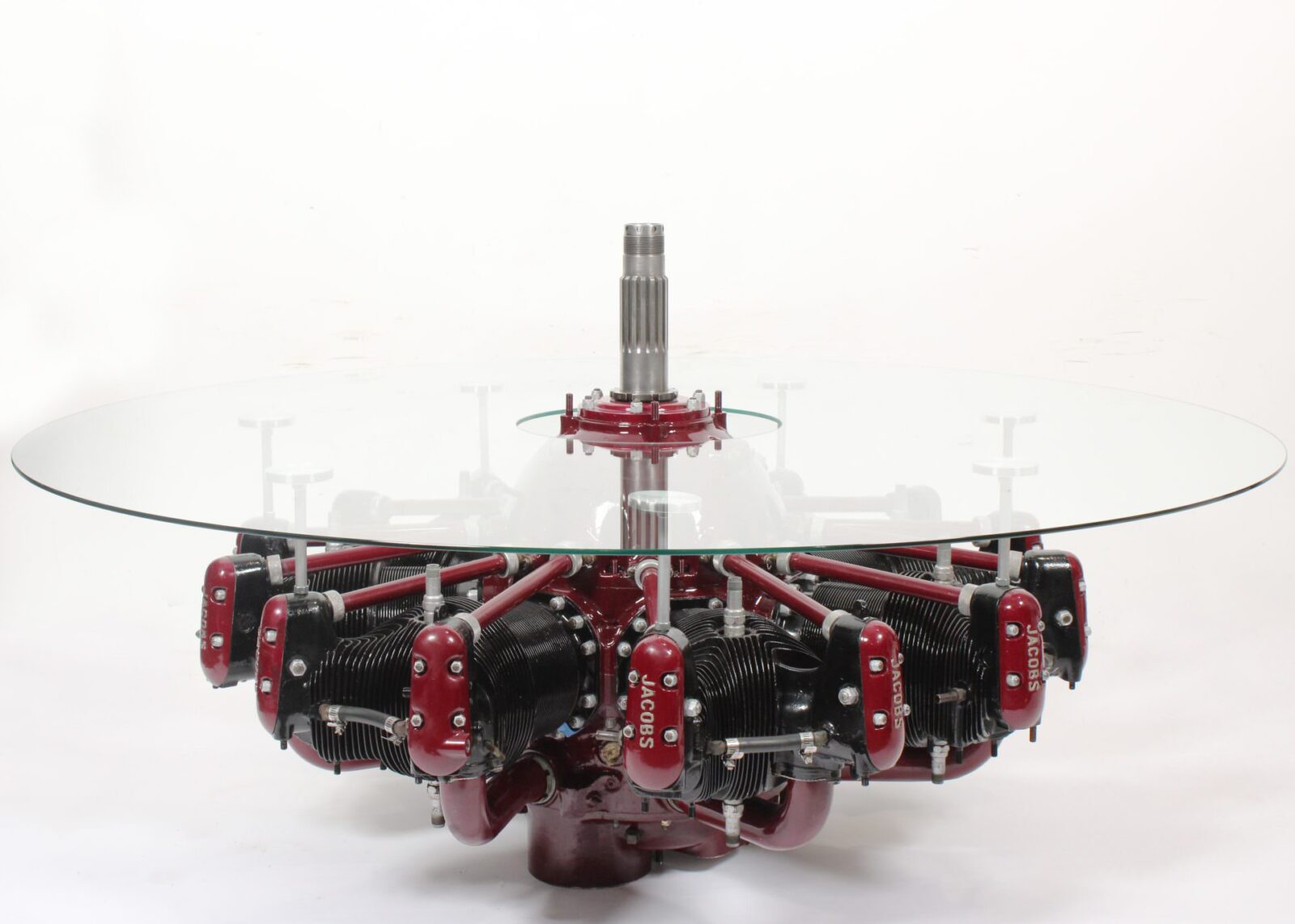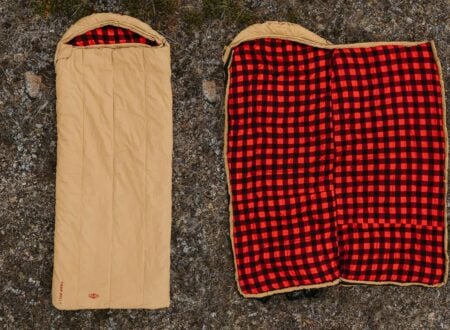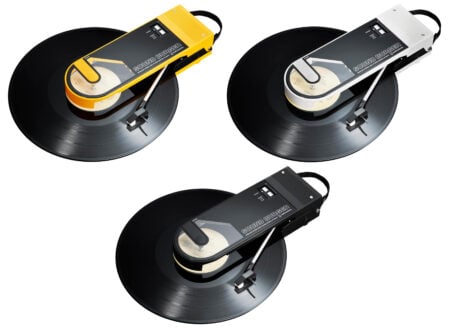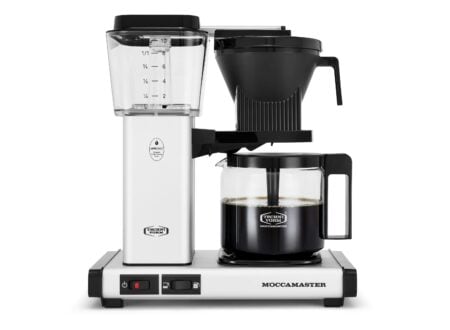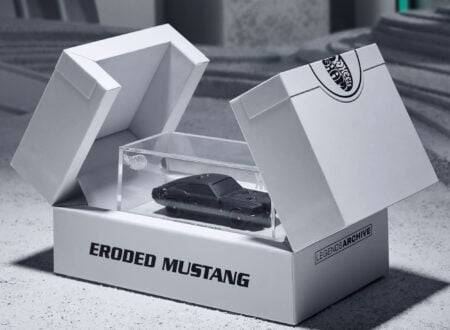This is a 7-cylinder Jacobs R-755 radial engine from 1941, the early years of World War II. It has a displacement of 758 cubic inches (12.4 liters) and it’s capable of up to 350 bhp – well, it was capable if this before it was turned into a coffee table.
The engine is finished with a burgundy crankcase, rocker covers, pushrod tubes, and intakes, and the glass tabletop has a circular hole in the center allowing the propeller shaft to rise up through the top.
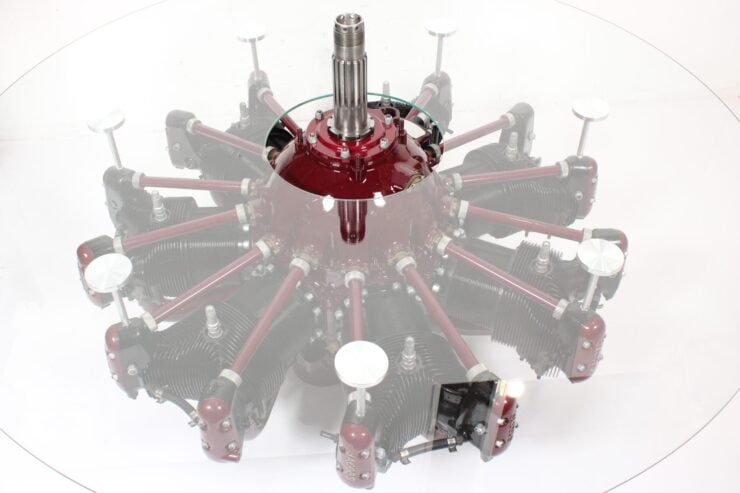

History Speedrun: The Jacobs R-755 Radial Engine
The Jacobs R-755 is remembered today as one of the most reliable air-cooled radial engines ever produced for light aircraft. It was developed by the Jacobs Aircraft Engine Company in the 1930s, and first formally introduced in 1934.
The R-755 was designed with simplicity and reliability as guiding principles – the engine has a seven cylinder radial configuration arranged in a single row around a central crankcase. Each cylinder has a bore of 5.25 inches and a stroke of 5 inches, with a total displacement of 757 cubic inches (12.4 liters) – the source of its “7-5-5” model designation.
The R-755 initially produced 225 bhp at 2,000 rpm, though later variants would push output to 275 and even 300+ bhp. What made this engine particularly useful for the aircraft manufacturers of the time was its combination of a reasonable weight (approximately 510 lbs dry) and its reliability.
Jacobs Aircraft Engine Company was founded in 1926 by Albert Jacobs in Pottstown, Pennsylvania. The company positioned the R-755 as a competitor to similar offerings from Continental and Pratt & Whitney. The R-755 found its way into a range of aircraft, including the Boeing-Stearman PT-18 Kaydet, Cessna 195 business liner, Grumman Ag Cat, North American AT-6 trainers, Beechcraft Staggerwing, and various Waco biplanes.
During World War II, the engine powered a number of military training aircraft (including the Stearman), helping to prepare thousands of fighter and bomber pilots for combat service. Production of the engine continued through the 1940s, with thousands of R-755 engines manufactured, mostly for the war effort.


The engine was built into a coffee table by the seller, they stripped and refinished it, painted the crankcase in light blue, then re-plated and polished the hardware.
Following WWII, many surplus engines and aircraft powered by the engines became available to the general public – often for not a whole lot of money. Today there are many R-755 engines still powering vintage aircraft, and plenty of radial engine specialist aircraft mechanics cut their teeth working on them
The engineering principles that made the R-755 successful seem almost quaint by modern standards: the engine has many oversized components, conservative power ratings, and simple systems designed with ample safety margins and ease of maintenance in mind – that last feature would make a welcome change for many modern mechanics.
These characteristics resulted in an engine that could routinely reach time between overhaul (TBO) intervals of 1,200 hours or more – impressive for its era and not bad even by modern standards. Variants of the engine remained in production through to the 1970s, and even today parts availability is good thanks to strong aftermarket demand.
The Jacobs R-755 Radial Engine Coffee Table Shown Here
The coffee table you see here is essentially a Jacobs R-755 radial engine with a circular glass tabletop affixed to a series of aluminum support legs. The tabletop measures in at 60″ in diameter, that’s 5 feet or 152.4 cm.
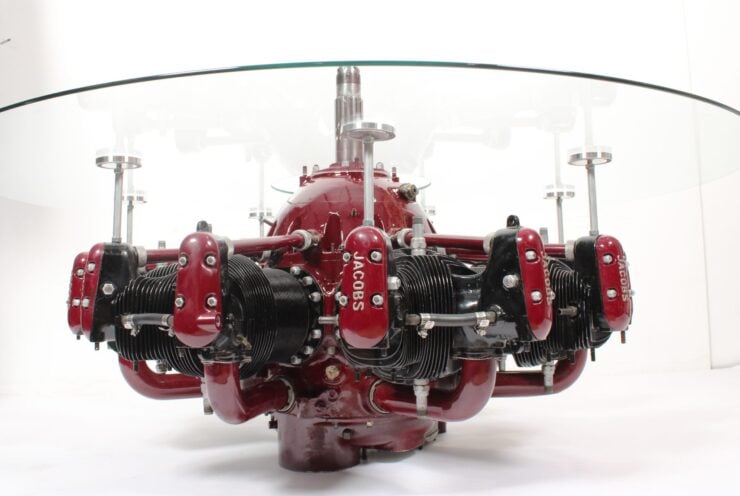

Unusually for an engine-based coffee table, the internal components of this engine are all said to still be in place – the pistons, connecting rods, valves, pushrods, rockers, etc. Oftentimes with coffee tables like this the internal parts are removed to make it lighter.
This radial engine coffee table is now being offered for sale out of Meadow Vista, California with no reserve price on Bring a Trailer, and you can visit the listing here if you’d like to read more about it or place a bid.
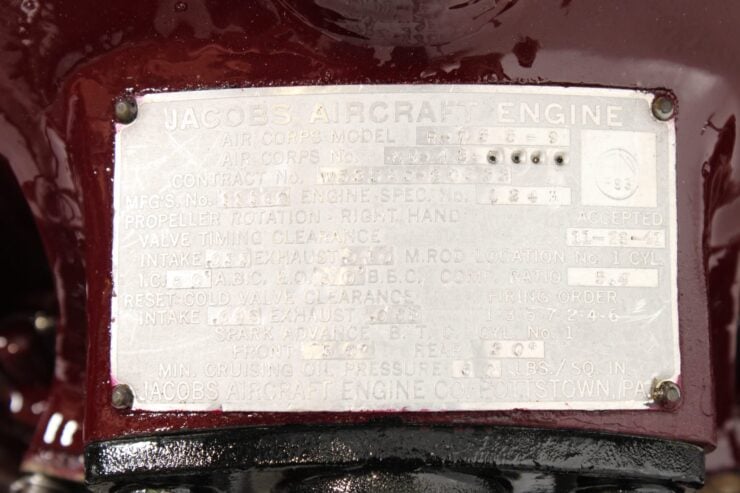
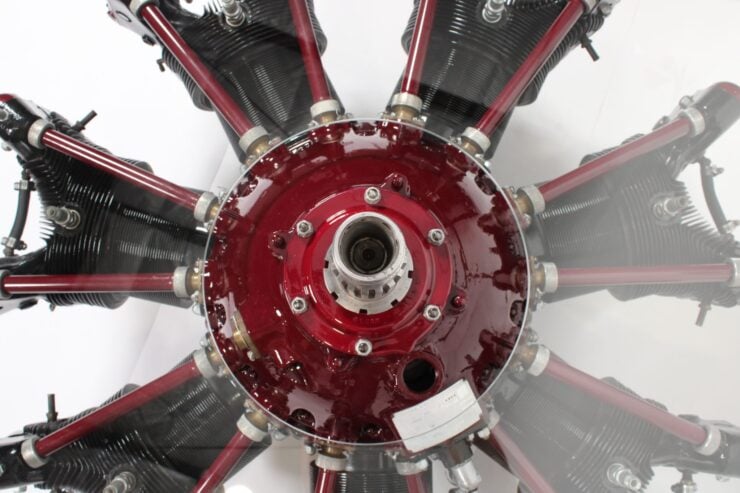
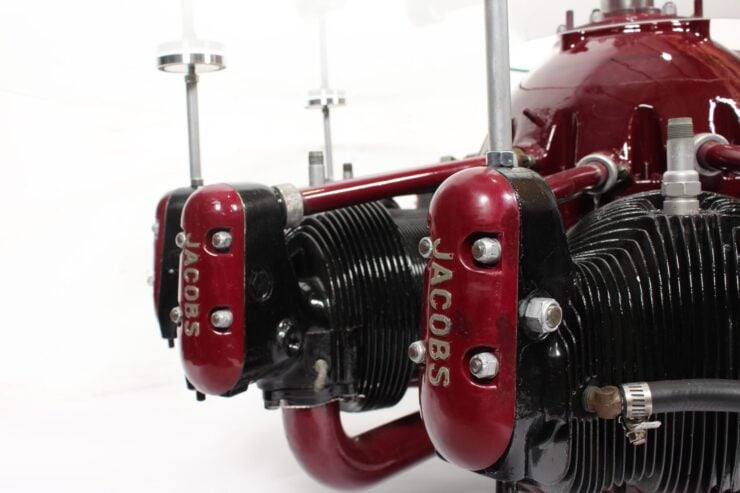
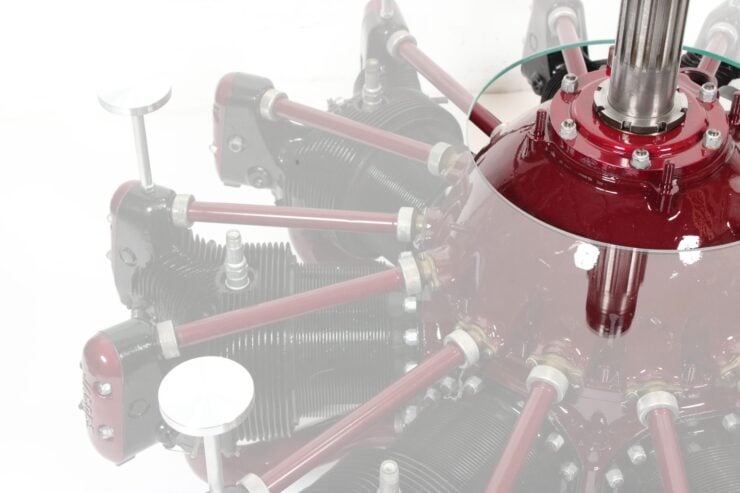
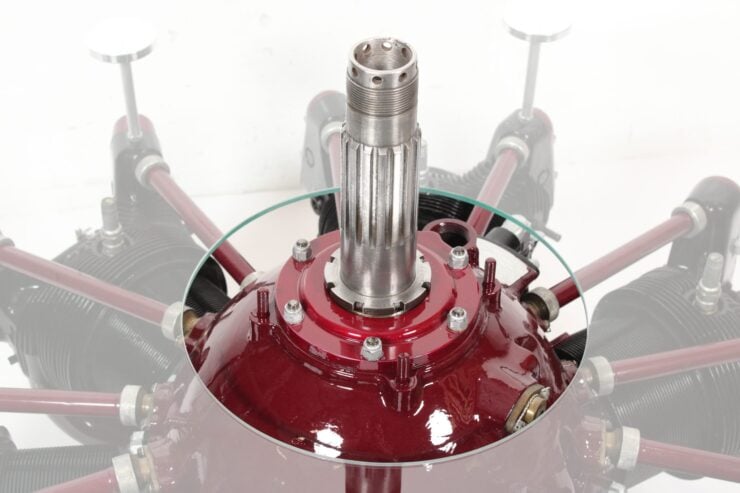
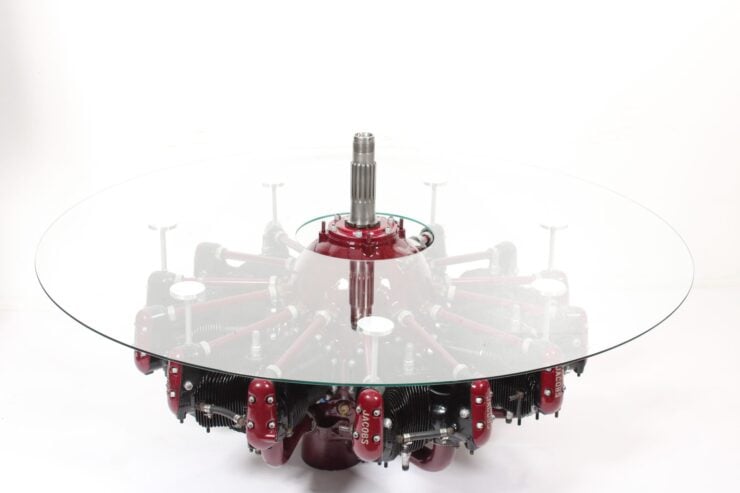
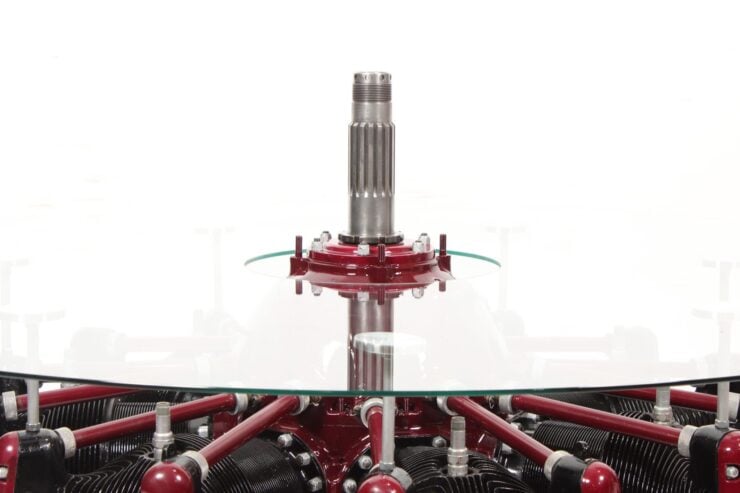

Images courtesy of Bring a Trailer

